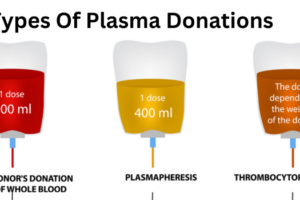Finding ways to conserve this priceless resource in all facets of our daily lives is imperative in today’s world where water scarcity has emerged as a critical issue washing cars. In the way we wash our cars, for example, we have a big opportunity to influence things. We can conserve water while preserving the cleanliness and luster of our vehicles by implementing easy-to-use strategies.
The best ways to Save Water while washing cars will be covered in this section. There are many ways we can support water conservation without sacrificing the cleanliness of our vehicles, from using water-efficient techniques to making thoughtful product selections.
Here are some suggestions to help you to Save Water while washing cars whether it is your two- or four-wheelers:
- Before you spray water on the car, dust it off. The only thing your car needs to look clean sometimes is a simple dust-off. For less dust to land on your car, keep it covered.
- Use a bucket rather than a hose with a constant flow of water. When using a hose, choose one with a spray handle that turns the nozzle off when you walk away from it. A 100-gallon car wash is reduced to 30 gallons in this configuration, according to the Department of Environment, Maryland, USA. It is more effective to use pressurized flow when done so carefully.
- Professional car washes and drive-in car washes frequently have a water recycling system that significantly lowers water consumption. Water that is under pressure is also used.
- In areas with limited water resources, steam cleaning and “dry wash” or “waterless” cleaning methods are becoming more and more popular. In their service centers, a few other manufacturers, including Maruti, Hyundai, and Nissan, have implemented this greener car washing technology. To leave a shiny surface, they apply a special kind of foam to the car, spray it, and then wipe it off with a microfiber cloth. Compared to a traditional car wash, Nissan claims its water usage has decreased by 45%. Maruti claims that this process takes roughly 20 minutes per wash, versus 45 minutes for a conventional process.
- When washing your car at home, try to do so next to a garden so that the runoff water can be absorbed and put to good use. Make sure to use shampoos that can be biodegradable for cleaning. Instead of using fresh water to wash cars, the Bangalore Water Supply and Sewerage Board advise using treated wastewater.
- Use a bucket of soapy water to clean vehicles.
- The usual solution is soap and water. Read the label carefully if you need a special cleaning product for cars, and make sure you use a non-toxic, biodegradable detergent. Anything with the words Poison, Harmful, or Danger on it should not be used. While washing a vehicle, be sure to turn off the running water.
- Use an automatic shutoff nozzle-equipped hose to rinse cars.
- 10 gallons are consumed every minute by a typical garden hose. Consequently, a 10-minute car wash requires the use of 100 gallons of water. The amount of water you save per wash can reach 70 gallons as you use an automatic shutoff nozzle on your hose to stop the flow of water while you wash your car.
- Even more, water can be saved by using a power washer; these machines typically use 2 to 5 gallons per minute, which translates to up to 80 gallons less water than a typical home without an automatic shutoff nozzle.
- Use Durable Products: You won’t need to wash your car as frequently if you use durable tire shine and other car care products. Both water and the appearance of your car will be preserved.
- Dry Your Car: If you don’t dry your car shortly after a wash, you’re wasting water. Your car will be more resistant to water stains and smudges if you dry it.
- Utilize a pressure washer.
- The use of a pressure washer is another way to wash your car with less water. When compared to the conventional method of using a bucket of soapy water and a hose, a pressure washing machine can clean the vehicle much more quickly. Thus, it accomplishes the task with less water used. According to Royce Industries, a garden hose and a pressure washer each use 50–70% less water than the other. A pressure washer is a smart purchase because you can use it all over your house.
- Wash off with a watering can.
- The use of a watering can to clean your car is another approach Knight suggests. By filling up the watering can each time and giving the car a thorough rinse to ensure that all soapy residue is removed, this technique enables you to manage the amount of water used.
In conclusion, employing waterless car wash techniques and utilizing the best car foam wash shampoo in India can significantly reduce the amount of water used to clean cars. These environmentally friendly options provide a practical way to conserve this priceless resource by removing the need for excessive water use. So let’s adopt these sustainable behaviors and work to create a greener future.






